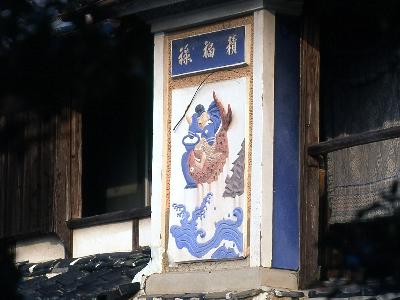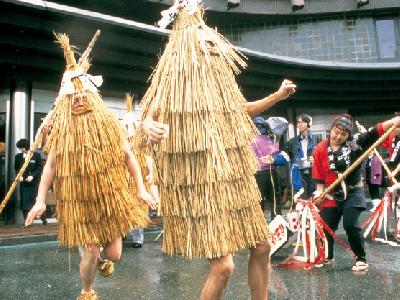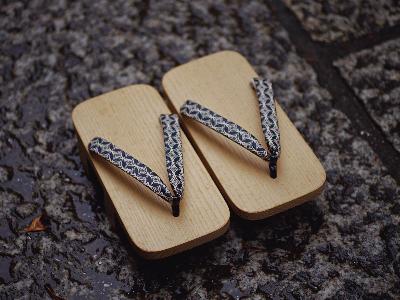|
Koto-e is a form of relief carving on Japanese plaster. A special craftsman makes plaster reliefs and sculptures on to the walls of private house and storehouse. Designs include auspicious symbols and characters as well as imaginary beasts that represent people's prayers and wishes.
'Koto-e' has only recently been coined as a name for this craft, and Izu Chohachi's work was the first to be categorized as such. This craft used to be called 'doro-e', 'kabe-e', etc.
Koto-e relief carving is a craft that has only really developed from the late Edo through Meiji period, a time of kaleidoscopic changes into the modern era. The spirit of the craftsmen living through these times can be felt in their work. Recently, plaster-relief carving nearly vanished, but it has gradually seen its popularity as a craft rise again. A koto-e competition takes place annually in Hamazaki Town, the hometown of Chohachi.
'Koto-e' has only recently been coined as a name for this craft, and Izu Chohachi's work was the first to be categorized as such. This craft used to be called 'doro-e', 'kabe-e', etc.
Koto-e relief carving is a craft that has only really developed from the late Edo through Meiji period, a time of kaleidoscopic changes into the modern era. The spirit of the craftsmen living through these times can be felt in their work. Recently, plaster-relief carving nearly vanished, but it has gradually seen its popularity as a craft rise again. A koto-e competition takes place annually in Hamazaki Town, the hometown of Chohachi.
| [+ADDRESS] | 
|














